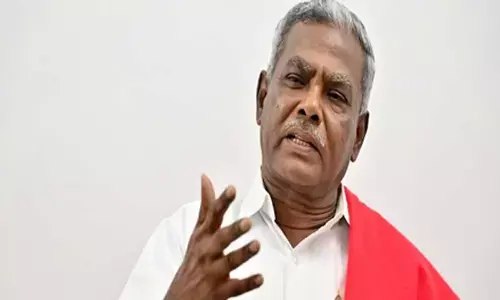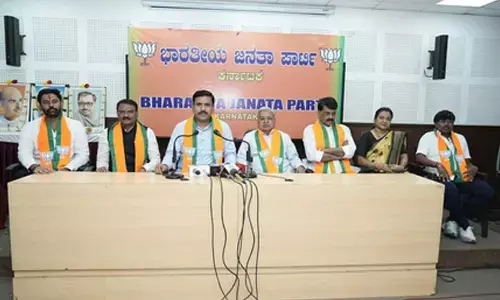A teacher's 'Happiness Curriculum'

What is education if it doesn’t enable you to become better in life? Is it just marks, exams and grades that ready us for the greater challenges in life or there is learning beyond it? A Telugu teacher, Uma Gandhi of Sivajipalem in Visakhapatnam district of Andhra Pradesh has gone an extra mile to bring a novel idea, called the “Happiness Curriculum” at her school—Greater Visakhapatnam Municipal Corporation School
Uma Gandhi has received many awards for her lateral approach in education including the GVMC Best HM Award in 2013, best teacher award in 2019, 2014 and 2015 and best teacher in the district for 2016 and many more.
She is currently one of the members on the drafting committee that is making the Happiness Curriculum to be implemented in schools in the entire state. She expects it to get it rolled by the next academic session.
Once that is done, they will be sending out trainers to familiarise all teachers with the techniques and their importance.
Happiness Curriculum was first mandated by the Delhi Government to be taken in all the government schools in the capital.
It seeks to take out a few minutes from the timetable of students for non-tangible things like mental peace, value education and emotional intelligence.
Uma Gandhi is also practising a similar model in her district. She began by taking out some time from her regular classes and indulging in other interactive activities.
Gradually this got transformed into a practice adopted by the entire staff department and a time bracket of 45 minutes was given to this. "It was one part of the day where the students are not evaluated. They are free to speak anything, do anything and just be happy."
When the Happiness Curriculum was formalised in her school, she divided it into three categories: Mindfulness, Storytelling and group activities. Mindfulness is a session of meditation, but not the conventional type.
Here the students are not asked to close their eyes and shun away all the thoughts, rather they are told to let all thoughts seep in so they are able to understand themselves better. One is inquisitive how such small students are able to compose themselves and sit at a place for so long. She says "It is not easy.
Children are playful and given a chance, they would more likely to go out and play in 45 minutes. But we interacted with them, made them understand what we are doing and I think they enjoyed it. Many other activities like words construction, situation enactment and public speaking were also practised."
She feels it is imperative that students are taught how to handle pressure through subtle activities like these so that when they grow up, they can face every situation.
But bringing such a curriculum into the existing timetable had its own share of challenges. Teachers are reluctant to cut short on the time of their lectures initially.



















